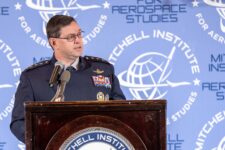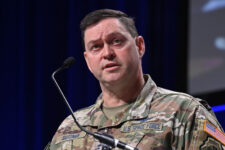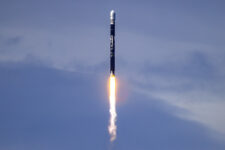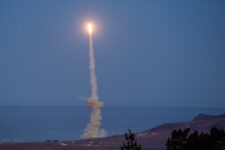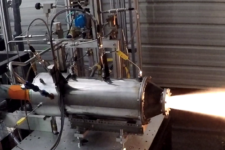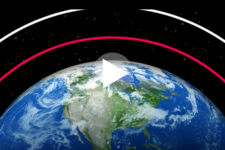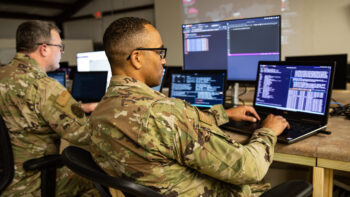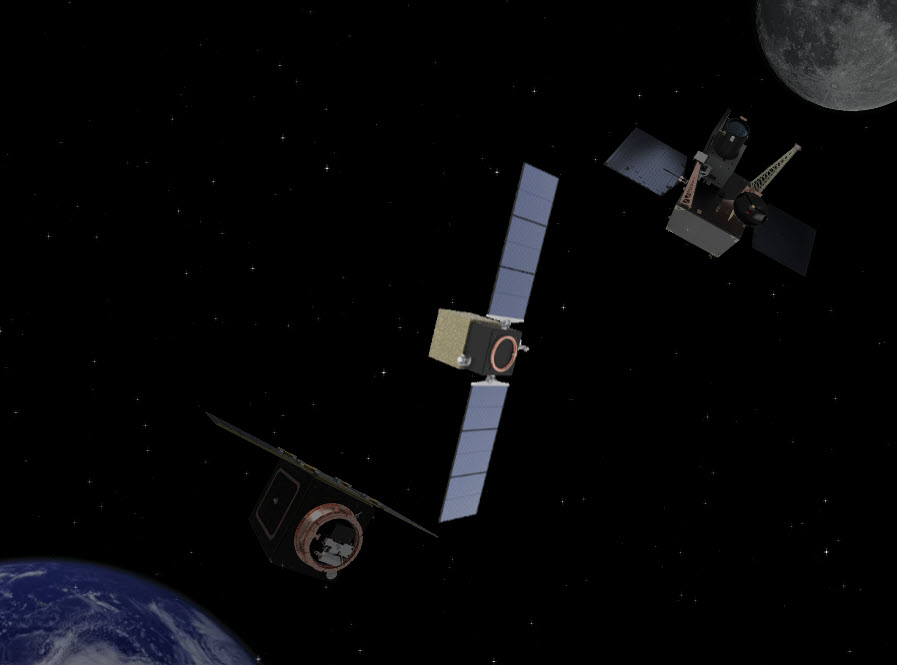
Small satellites that are flexible to host different payloads across orbits. Photo: Courtesy of Millennium Space Systems.
Within Millennium Space Systems’ headquarters in El Segundo, California, sits the Satellite Operations Center. Here engineers monitor and operate several small satellite constellations.
“We do all traditional aspects of mission operations, from launch and early operations to controlling the satellite during its mission and eventually decommissioning it,” said Randy Yount, systems engineer manager. “We’re there at critical phases, even at the proposal phase, shaping the mission architecture the customer needs.”
During critical reviews, the team evaluates mission requirements to determine various aspects, including how autonomy fits into on-orbit operations. Then when the Assembly, Test and Launch Operations team builds the satellite, the mission operations team runs tests to better understand how the vehicle works on the ground and how it will perform in space.
Monitoring and analyzing the performance of the various subsystems onboard each satellite is an around-the-clock job. That’s why the team developed in-house ground software, enabling near lights-out operations.
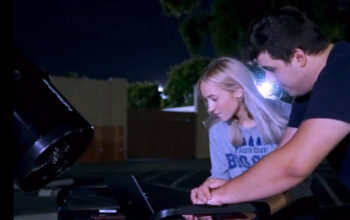
Ground station provides customers a true end-to-end mission solution. Photo: Courtesy of Millennium Systems.
This end-to-end approach gives the Missions Operations engineering team intimate familiarity with not just the satellite, but the end-to-end mission. The advantage is the ability to regularly apply lessons learned from flight programs back to new programs, resulting in frequently improved satellite designs better optimized for the mission. Red-Eye, a small satellite constellation that demonstrated new on-orbit technologies, illustrates this process.
“When we launched the first Red-Eye satellite, it took us a few weeks to fully commission it,” said Doug Hulse, Sensing Portfolio director. “We took lessons from operating the first satellite on orbit and fed them into the development of the other two vehicles. When we commissioned the third satellite, it took us only two days.”
Some on-orbit lessons give rise to new technologies that are later implemented on other programs. Red-Eye, for example, featured new on-board automation features that are now part of other programs.
“We have a lot of automation built into our satellites to protect them from issues, such as putting them in safe mode until a person on the ground manually fixes an anomaly,” said Hulse. “For Red-Eye, we created a system that automatically fixes certain issues and puts the satellite back into operation quickly. It’s a big deal because it significantly lessens operator load and reduces mission downtime.”
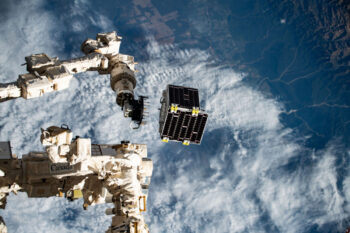
Red-Eye satellite. Photo: Courtesy of Millennium Space Systems.
To communicate with satellites and downlink data, the mission operations team relies on a network of ground
antennas around the world. In addition, Millennium Space Systems uses internally developed software that is compatible with both commercial and government ground networks.
“Flexibility is key for many of the missions we work on,” said Yount. “We can use our in-house software, or we can connect to our customer’s third-party solution. We can run the mission from our operations center, or train their mission ops team, whatever is needed for the mission. And in the process, we learn new lessons that make future satellites – and missions – better.”
Want to learn from satellites on orbit? Check out opportunities at Millennium Space Systems and apply today.

